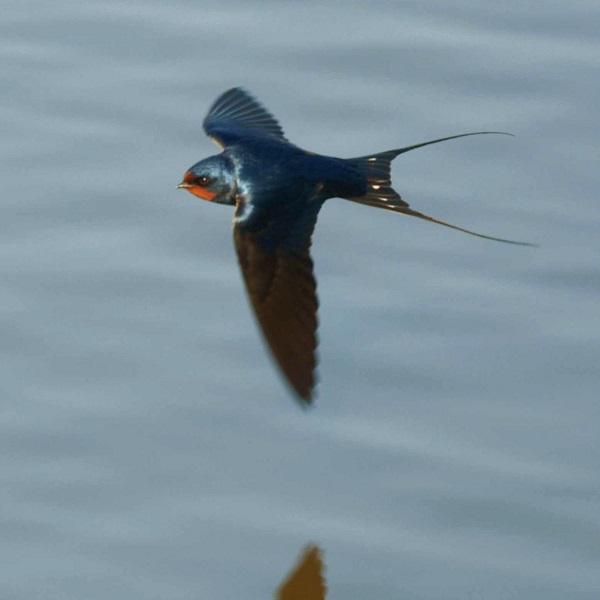You are here
Barn Swallow

Creative Commons photo by Ferran Pestaña
Enigmatic and familiar, the Barn Swallow can be found nearly worldwide—breeding across the Northern Hemisphere and wintering in the Southern Hemisphere as far away as Argentina and Australia. These bright blue birds are known for their abundance in open spaces and for their close association with humans. The birds have always been linked to people, even adapting former nesting grounds in caves and cliff faces for manmade structures as industrialization and urban sprawl changed their habitats. The swallow also feeds on bugs and insects, working as pest control for humans.
In recent years, though, the Barn Swallow has taken a hit. Land reclamation and the overuse of harmful pesticides have led to population decline. As agriculture has intensified the birds have lost important habitats, also reducing insect prey.
The Barn Swallow is an international symbol of bird migration and is a strong indicator of threatened habitats affecting similar bird species. As human interference and land reclamation begin to wreak havoc on the swallow population, similar birds may already be suffering the consequences.
Facts and figures from BirdLife International and IUCN Red List.
Scientific Name
- Hirundo rustica
Quick Facts
- All major flyways
- Decreasing by as much as 25% every three generations. (From 2012 estimate)
- Global population: Less than 500 million
- Prefers open areas (pastures and fields)
IUCN Red List Status
Main Threats
- Habitat loss from wetland drainage and agricultural intensification
- Climate change
Flyways

Map courtesy of IUCN, BirdLife International and the Handbook of Birds of the World 2016
